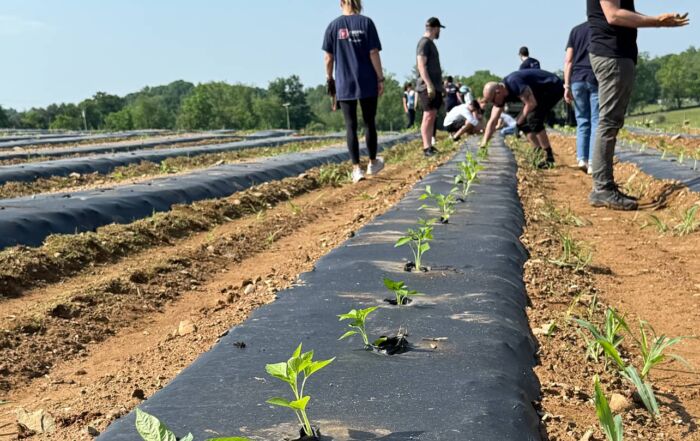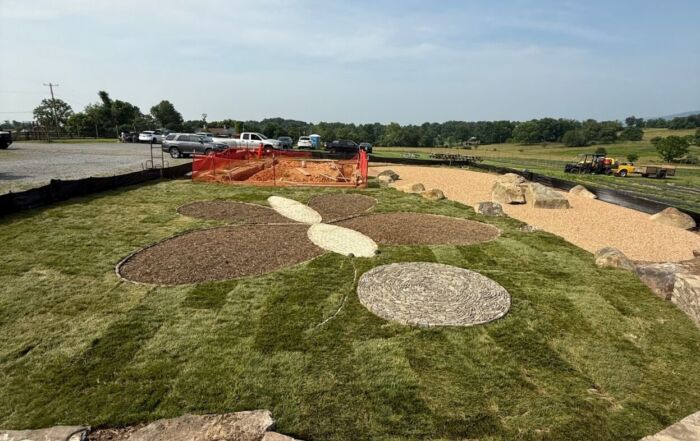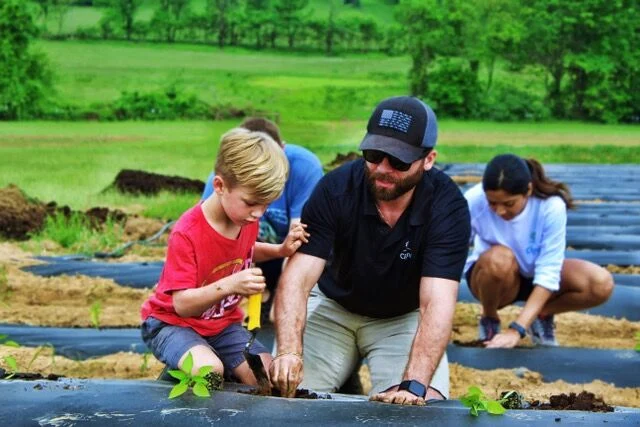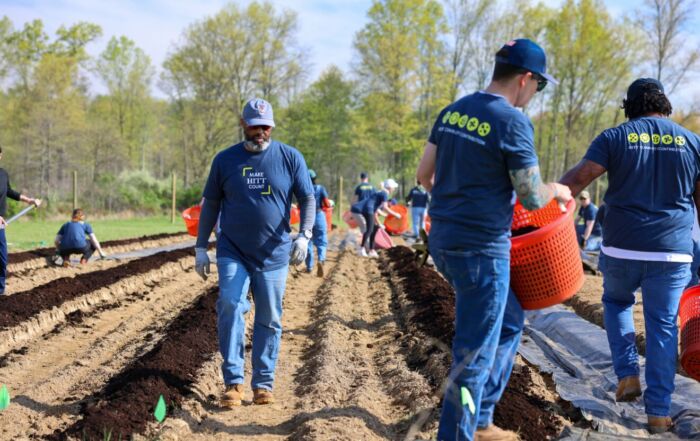
January 5, 2021
In 2018, the JK Community Farm was founded. In our first year, we grew on 4 acres producing about 30,000 lbs of produce, and 20,000 lbs of protein (beef, pork, and venison). When we were first getting started, everything was a mystery…will volunteers show up? Will anyone care about our mission? Will our deer fencing work? Where are we going to start our seeds? Our first food pantry partner was Loudoun Hunger Relief, and their wonderful team guided us through our nonprofit launch.
Our incredible community supported us every step of the way, and we could not be more grateful. In 2019, we were a bit more confident and increased our production to 7 acres, added 12 raised beds, a greenhouse, a high tunnel, and expanded our protein program to a sustainable herd of 25 black angus cattle. With the support of our community, we grew 115,000 lbs of chemical-free produce and protein for our local food pantries. An increase of 230% from 2018. Our food pantry partners in 2019 were Loudoun Hunger Relief, Food For Others, and Arlington Food Assistance Center.
When setting our goals for 2020, we decided to focus on our soil to ensure that we were growing regeneratively, and sustainably. It is important to our mission to improve our soil annually, this will allow us to increase our yields and the nutrient density of the crops. We received a generous grant which allowed us to develop an additional high tunnel, preform thorough soil testing, and develop a customized plant based compost to help restore our soil. We moved into 2020 with a goal of 135,000 lbs of nutrient dense produce and protein. As we began planting in March, the Covid-19 pandemic was beginning to impact our region. We had many things to consider…should we have increased our acreage? how can we increase our production?, what crops will yield quickly?, what if we can’t host volunteers?, what will happen to our corporate team building events?, what will our food pantries need? We made the decision to fill any additional space on our existing acreage with produce, we were grateful to receive 30 donated cattle from our community members, and despite the pandemic our volunteers worked with us in small groups and continued to be extremely generous with their time and support. We ended the year at a little over 147,000 lbs donated to our food pantry partners. In years prior, our volunteer force was typically corporate groups; in 2020 we hosted mostly families, and a lot of parents desperate to get their children outside (which of course – we are all for!).
In 2020, we saw food insecurity skyrocket. Food pantries, and grocery stores were empty as a result of supply chain issues, and stock piling. The food we were growing was more important than ever to our community in need. We saw students cooped up, with too much screen time, not enough exercise or fresh food. Our food education programming connected students to agriculture, nutrition, and their curriculum through outdoor learning.
Seeing the increased needs of our community, our board asked – “If you had the funding, what could you realistically accomplish in 2021?”
After what felt like a never ending stream of “what-ifs”, we determined that we could double of produce production, increase our herd to 45 cattle, bring 25 chickens on site, expand distribution to DC and further develop our food education curriculum. With the support of our board, our volunteers, our annual partners, and our community we have raised the funding to grow 230,000 lbs for our food pantry partners in 2021. To reach this goal, we will need the support of about 4,500 volunteers through the 2021 season. We have seen the impact our community can make in our organization, and to our food pantry partners, and we invite you to join us this season in ensuring everyone has access to healthy food.




